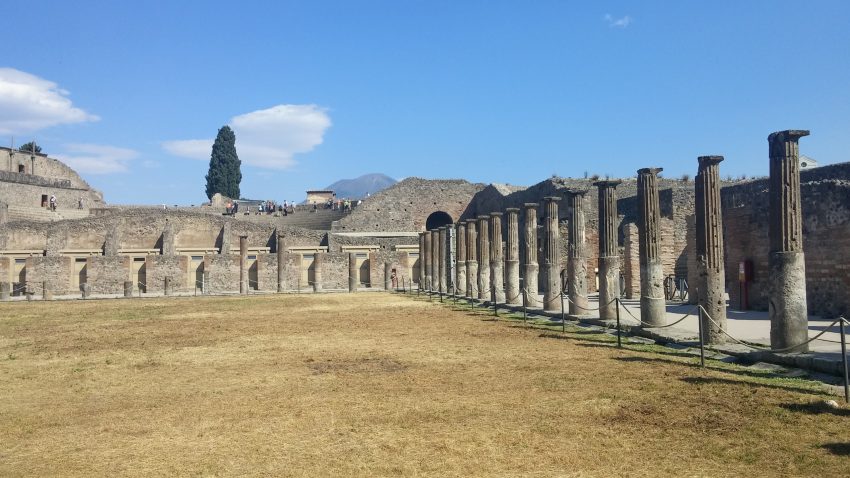As a port of call Naples offers a variety of destinations, from the sunny Amalfi Coast, to the gritty city itself, or to one of the most fascinating archaeological sites in Italy, Pompeii. Although we had travelled there on our own in the past we decided to follow our advice and visit Pompeii again, with a guide this time.
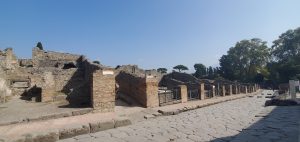
Pompeii, along with many villas in the surrounding area, was buried under 4 to 6 meters of volcanic ash and pumice in the eruption of Mount Vesuvius in 79 AD. The spontaneity of the eruption lead to the city being preserved, pretty much as it was on that day, under the mountains of ash. It was rediscovered, and identified as Pompeii, in 1763 and shortly thereafter the excavation began. New finds continue to this day as more and more of the city and the surrounding area are uncovered.
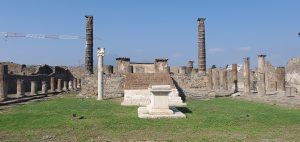
Pompeii has been a popular tourist site, dating back over 250 years ago. It was a common stop on the Grand Tour, and was declared a World Heritage Site by UNESCO in 1997. In 2019 the total number of visits surpassed 3.9 million, leading to concern about over tourism. In 2022 the number had dropped to 3 million, yet to reach the pre-pandemic numbers.

Our stop was part of a one day private excursion out of Naples. We were greeted by our guide upon arrival in the afternoon. The two hour walking tour was designed to show us the best example of the types of buildings and homes found in the city; from theaters and gymnasiums, to baths and brothels. We stopped to learn about their version of street food before touring the homes of the middle to upper class residents. Each home featured large rooms, an open court yard, beautiful mosaic floors and brightly painted walls. Many also had a second floor for servants and slave quarters.
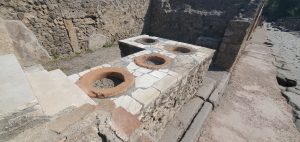
The final stop was the main square offering the parliament buildings, banks, and shops for trading such as textiles. The basilica, which today is the name used for a place of worship, was in that day the court house.
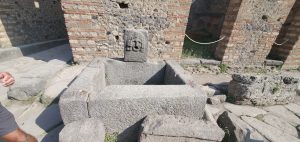 One of the most sobering items on display were casts of the residents and their pets, forever contorted in surprise. Ash from the volcano covered them as they were that day, and when over time the bodies decomposed, it left a gap in the lava. Archeologist filled the gaps with plaster to get an impression of the body. Any of the bones and teeth that remained were encased in the plaster. During covid a museum was created near the exit where these casts and other finds are on display.
One of the most sobering items on display were casts of the residents and their pets, forever contorted in surprise. Ash from the volcano covered them as they were that day, and when over time the bodies decomposed, it left a gap in the lava. Archeologist filled the gaps with plaster to get an impression of the body. Any of the bones and teeth that remained were encased in the plaster. During covid a museum was created near the exit where these casts and other finds are on display.
Our guide Max remembers playing in the ruins with his friends less than 20 years ago, before it was recognized as such an important site. Today the site is well protected and financed with the entry fees from tourists, but it is those stories that help bring the history of Pompeii to life. Be sure to put Pompeii on your next itinerary to the south of Italy, and be sure to see it with a guide.
